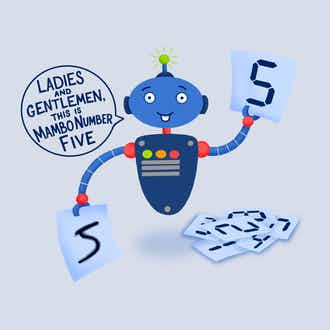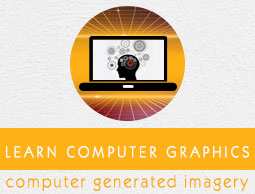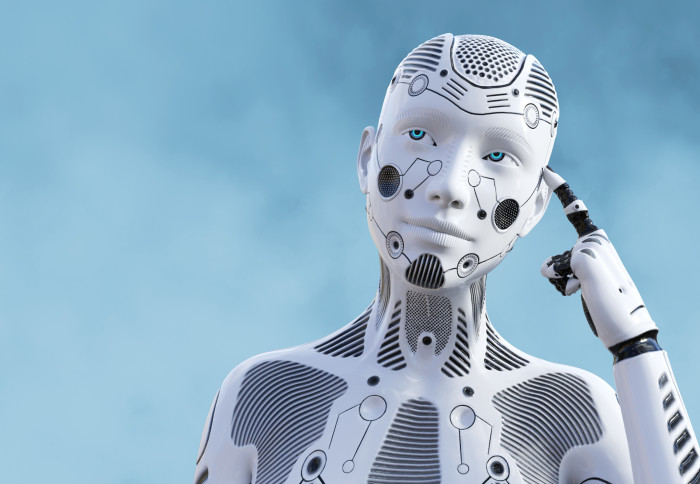
Machine learning, and neural networks are terms most people have heard of. What's the difference? Are deep learning more effective than other types of computing, or vice versa? If you think so, then you aren't alone. Deep learning is an advanced process, whereas neural networks and machine-learning are very similar. This involves building a model from structured data and then training it. Once you train a model to analyze structured data, you can start using it on unstructured data.
Machine learning
Deep learning is closely related to machine learning. While they use the same process, training against testdata, some methods do require significant human input. Machine learning algorithms allow computers to recognize objects around the world. These algorithms can take a lot of time and require significant human intervention in order to pre-process data. It is easy to confuse machine learning and deep-learning. But let's get to the heart of their differences and discover how these techniques differ.

Machine learning is the process by which a computer is trained to identify patterns in large numbers of data and then improves on these patterns over time. Most machine learning programs require human input, but unsupervised algorithms can also be used. Software that detects suspicious bank account activity and detects fraud is an example of machine learning. The way these algorithms learn is what makes deep learning different from machine learning. The differences are significant and should not be underestimated.
Deep learning incorporates machine learning as well as logical structures to analyze data. Deep learning is built on the structure found in human brain neurons. This learning technique results in a system with greater accuracy and capability than standard machine learning algorithms. Deep learning models can also be used to save money and detect cancer earlier. The healthcare sector will also reap the benefits of deep learning.
Neural networks
Neural networks can learn both from inputs or outputs. This is known by the term "training". In training, the neural network receives random numbers and weights and then tries to figure out which inputs match them. There are two types of training available: unsupervised and supervised. Supervised learning involves giving feedback to the neural networks, also known as grades. A neural network may receive more training examples during training than an unsupervised learning algorithm.
The purpose of training artificial neural networks is to improve their performance and minimize loss. Signal processing uses a variety network types. A neural network is necessary for tasks like dictionary learning. To improve the quality and extract desired features, it uses neural networks and transfer function. Deep learning can also be used for feature classification and dictionary learning. Deep learning is better at challenging tasks such as audio and image processing.

While there are many applications of neural networks, three are the most common. Understanding how neural networks work can provide insight into this technology. They are able to analyze people's behavior and predict their future. Neural networks, for example, can be used to predict stock markets movements and identify authorized people. This technology has been used to improve every aspect human life. What are the benefits of deep-learning? If deep learning is something you haven't heard of, you are missing some of the most important features of modern technology.
FAQ
What is AI used today?
Artificial intelligence (AI) is an umbrella term for machine learning, natural language processing, robotics, autonomous agents, neural networks, expert systems, etc. It's also called smart machines.
The first computer programs were written by Alan Turing in 1950. He was intrigued by whether computers could actually think. In his paper "Computing Machinery and Intelligence," he proposed a test for artificial intelligence. The test asks if a computer program can carry on a conversation with a human.
John McCarthy in 1956 introduced artificial intelligence. He coined "artificial Intelligence", the term he used to describe it.
There are many AI-based technologies available today. Some are simple and easy to use, while others are much harder to implement. They can be voice recognition software or self-driving car.
There are two types of AI, rule-based or statistical. Rule-based uses logic in order to make decisions. A bank account balance could be calculated by rules such as: If the amount is $10 or greater, withdraw $5 and if it is less, deposit $1. Statistics are used for making decisions. For instance, a weather forecast might look at historical data to predict what will happen next.
Who is the inventor of AI?
Alan Turing
Turing was first born in 1912. His father was a clergyman, and his mother was a nurse. He was an exceptional student of mathematics, but he felt depressed after being denied by Cambridge University. He discovered chess and won several tournaments. After World War II, he was employed at Bletchley Park in Britain, where he cracked German codes.
He died on April 5, 1954.
John McCarthy
McCarthy was born 1928. McCarthy studied math at Princeton University before joining MIT. He developed the LISP programming language. He had laid the foundations to modern AI by 1957.
He died in 2011.
Which industries use AI the most?
The automotive industry is among the first adopters of AI. BMW AG uses AI, Ford Motor Company uses AI, and General Motors employs AI to power its autonomous car fleet.
Other AI industries are banking, insurance and healthcare.
Why is AI important?
It is expected that there will be billions of connected devices within the next 30 years. These devices include everything from cars and fridges. Internet of Things, or IoT, is the amalgamation of billions of devices together with the internet. IoT devices will be able to communicate and share information with each other. They will also be able to make decisions on their own. A fridge might decide whether to order additional milk based on past patterns.
According to some estimates, there will be 50 million IoT devices by 2025. This is an enormous opportunity for businesses. However, it also raises many concerns about security and privacy.
What are the benefits of AI?
Artificial intelligence is a technology that has the potential to revolutionize how we live our daily lives. It has already revolutionized industries such as finance and healthcare. It's also predicted to have profound impact on education and government services by 2020.
AI is being used already to solve problems in the areas of medicine, transportation, energy security, manufacturing, and transport. The possibilities are endless as more applications are developed.
So what exactly makes it so special? Well, for starters, it learns. Computers can learn, and they don't need any training. They simply observe the patterns of the world around them and apply these skills as needed.
AI stands out from traditional software because it can learn quickly. Computers can quickly read millions of pages each second. They can quickly translate languages and recognize faces.
Artificial intelligence doesn't need to be manipulated by humans, so it can do tasks much faster than human beings. It can even surpass us in certain situations.
A chatbot called Eugene Goostman was developed by researchers in 2017. The bot fooled dozens of people into thinking it was a real person named Vladimir Putin.
This is a clear indication that AI can be very convincing. Another benefit of AI is its ability to adapt. It can be trained to perform new tasks easily and efficiently.
This means that companies don't have the need to invest large sums of money in IT infrastructure or hire large numbers.
How does AI work?
An algorithm is a sequence of instructions that instructs a computer to solve a problem. An algorithm is a set of steps. Each step must be executed according to a specific condition. A computer executes each instruction sequentially until all conditions are met. This continues until the final results are achieved.
Let's suppose, for example that you want to find the square roots of 5. One way to do this is to write down all numbers between 1 and 10 and calculate the square root of each number, then average them. It's not practical. Instead, write the following formula.
sqrt(x) x^0.5
This says to square the input, divide it by 2, then multiply by 0.5.
Computers follow the same principles. It takes your input, squares and multiplies by 2 to get 0.5. Finally, it outputs the answer.
What are some examples AI apps?
AI can be used in many areas including finance, healthcare and manufacturing. These are just a handful of examples.
-
Finance - AI is already helping banks to detect fraud. AI can detect suspicious activity in millions of transactions each day by scanning them.
-
Healthcare – AI is used for diagnosing diseases, spotting cancerous cells, as well as recommending treatments.
-
Manufacturing – Artificial Intelligence is used in factories for efficiency improvements and cost reductions.
-
Transportation - Self-driving cars have been tested successfully in California. They are now being trialed across the world.
-
Utilities are using AI to monitor power consumption patterns.
-
Education - AI is being used in education. Students can, for example, interact with robots using their smartphones.
-
Government - AI can be used within government to track terrorists, criminals, or missing people.
-
Law Enforcement-Ai is being used to assist police investigations. Investigators have the ability to search thousands of hours of CCTV footage in databases.
-
Defense - AI can both be used offensively and defensively. It is possible to hack into enemy computers using AI systems. For defense purposes, AI systems can be used for cyber security to protect military bases.
Statistics
- More than 70 percent of users claim they book trips on their phones, review travel tips, and research local landmarks and restaurants. (builtin.com)
- In the first half of 2017, the company discovered and banned 300,000 terrorist-linked accounts, 95 percent of which were found by non-human, artificially intelligent machines. (builtin.com)
- By using BrainBox AI, commercial buildings can reduce total energy costs by 25% and improves occupant comfort by 60%. (analyticsinsight.net)
- The company's AI team trained an image recognition model to 85 percent accuracy using billions of public Instagram photos tagged with hashtags. (builtin.com)
- While all of it is still what seems like a far way off, the future of this technology presents a Catch-22, able to solve the world's problems and likely to power all the A.I. systems on earth, but also incredibly dangerous in the wrong hands. (forbes.com)
External Links
How To
How do I start using AI?
Artificial intelligence can be used to create algorithms that learn from their mistakes. This learning can be used to improve future decisions.
For example, if you're writing a text message, you could add a feature where the system suggests words to complete a sentence. It would use past messages to recommend similar phrases so you can choose.
The system would need to be trained first to ensure it understands what you mean when it asks you to write.
You can even create a chatbot to respond to your questions. For example, you might ask, "what time does my flight leave?" The bot will answer, "The next one leaves at 8:30 am."
Our guide will show you how to get started in machine learning.